This article was co-authored by Danny Gordon and by wikiHow staff writer, Danielle Blinka, MA, MPA. Danny Gordon is an American College of Sports Medicine (ACSM) Certified Personal Trainer and Owner of The Body Studio for Fitness, a fitness studio based in the San Francisco Bay Area. With over 20 years of physical training and teaching experience, he has focused his studio on semi-private personal training. Danny received his Personal Trainer Certification from the California State University, East Bay and the American College of Sports Medicine (ACSM).
There are 13 references cited in this article, which can be found at the bottom of the page.
This article has been viewed 20,140 times.
Your hamstrings are the muscles in the back of your upper legs, which help your knees bend and your legs move back and forth.[1] You can build your hamstrings by doing exercises that target them, incorporating your own body weight or heavy weights to challenge the muscles. By strength training 2-3 alternating days a week and eating a nutritious diet, you'll be on your way to strong, well-defined hamstrings.
Steps
Doing Body Weight Exercises
-
1Perform bridges. Lie down on your exercise mat with your knees bent in front of you and your arms straight at your sides. Place your palms and the soles of your feet flat on the floor. Dig your feet into the floor, lifting your hips up toward the ceiling and squeezing your glutes. Then, slowly lower yourself down to your starting position. Keep your back straight throughout the exercise.[2]
- Once the exercise becomes easy, you can make it more challenging by lifting one leg off the floor. Hold your leg straight out in front of you while you perform the bridges.
- Complete 12-15 reps for 1-3 sets.
-
2Execute single leg bench hip thrusts on each side. Sit in front of a weight bench facing away from it with your upper back against the bench. Place your feet shoulder-width apart in front of your body, with your knees bent. Lift one leg off the floor so that the other leg will do all the work. Using the leg that's still on the floor, lift yourself off the floor slowly, keeping your back straight. Continue to rise off the floor until your upper back is resting on the top of the bench in a bridge position. Tighten your glutes for 2 seconds, then return to your starting position.[3]
- You can stretch your arms out on the bench for stability during this exercise. As an alternative, you can hold your arms at your sides. However, your leg should be doing the work to lift you.
- Do 1-3 sets of 10-12 reps for each leg.
Advertisement -
3Perform glute hamstring raises. Kneel on the floor in an upright position, as though you are standing on your knees. Place the heels of your feet under an immovable object that will keep them down. Tighten your hamstrings and press your heels against the immovable object. Place your hands out in front of you to catch yourself, then slowly bend forward at your knees, using your tightened hamstrings to control your motion. Go all the way down to the floor until you are in a pushup position, then use your arms and hamstrings to lift yourself back up to the starting position.[4]
- Perform 6 reps of this exercise for 1-3 sets, depending on your experience level.
- The best place to secure your heels is between the rollers on a weight bench. If you don’t have a weight bench, you can ask a partner to help you, or you can place your feet under the edge of your bed.
-
4Do hamstring curls with resistance tubing.[5] Loop one end of your resistance tubing around the ankle of the leg you’re working. Step on the other end of the tubing with your other foot. Then, stand with your feet shoulder-width apart and knees slightly bent. Bend the leg you’re working at the knee, flexing it behind your back toward your buttocks. Raise your foot as close to your buttocks as possible, then return to your starting position.[6]
- Perform 1-3 sets of 12-15 reps for each leg.
- To create more tension, decrease the length of the resistance tubing between your feet or get a higher tension tube. When you first start, use the entire length of a 3 feet (0.91 m) long resistance band with a light tension. Once this doesn't feel challenging, decrease the length by 3 inches (7.6 cm) by moving your foot down the length of the band. Continue to decrease the length of your band until the band is too short for use. Then, switch to a band labeled as medium or heavy tension.
Using Weights
-
1Lift the heaviest weights you can for fewer reps. This helps you build mass quicker. How much weight is considered “heavy” depends on the person, including experience level and sex. Start with lighter weights as you perfect your form, then increase how much you lift in small increments.[7]
- For example, you might start out lifting just the bar if using a barbell or 9 to 15 pounds (4.1 to 6.8 kg) on each side if you're using dumbbells. However, you should increase this weight by 2 to 5 pounds (0.91 to 2.27 kg) on each side as soon as your sets become easy. Continue to increase how much weight you’re lifting until you’ve reached a weight that remains challenging for you.[8]
-
2Do bench hip thrusts. Sit on the floor in front of your bench with your knees bent in front of you. Hold a barbell across your hips. Dig your feet into the floor, pushing your hips up off the floor with the barbell over your hips. Once your body is in a bridge position, squeeze your glutes for 2 seconds, then release. Slowly lower your hips to the starting position.[9]
- Complete 6-8 reps for 1-3 sets.
- At first, it’s best to do this without any weight to make sure your form is correct.
- If you don’t have a barbell, you can use dumbbells, a kettlebell, or any heavy object you have around the house, like a sack of potatoes.
-
3Execute weighted hamstring curls.[10] Lie on a weight bench on your stomach with your upper ankles positioned under the foam rollers on the bench's leg bar. Tighten your hamstrings, then slowly bend your knees and bring your feet up toward the ceiling, lifting the leg bar up off the bench. Stop when your knees are at a 90-degree angle. Slowly lower the bar back to the starting position.[11]
- Repeat this exercise 6-8 times for 1-3 sets.
- If you don't have access to a bench that allows you to do leg lifts, do the exercise on the floor with ankle weights. Lie on your stomach with your legs stretched out while wearing your ankle weights. Slowly bend your knees into a 90-degree angle, then lower your feet back to the floor.
-
4Perform Romanian deadlifts with heavy weights. Stand with your feet shoulder-width apart and a barbell stationed directly in front of you. Hinge forward at your waist in a forward bend, keeping your legs straight with slightly bent knees. Grasp the barbell with your arms shoulder-width apart. Stand, pulling the barbell up your body, stopping once the barbell reaches your thighs. Slowly lower the barbell down toward the floor to complete the rep.[12]
- Repeat the lift 6-8 times per set for 1-3 sets, depending on experience level.
- Lift the heaviest weights you can safely lift with proper form.
- You can also use dumbbells or a kettlebell. If you’re using dumbbells, place one on each side of your body.
-
5Do box squats. Hold a heavy barbell or dumbbells at your shoulders, keeping your arms and upper back engaged. Stand in front of a bench or stabilized chair with your feet spread slightly more than shoulder-width apart and your toes pointed out. Bend your knees and slowly lower your body down toward the bench or chair, keeping your back straight and your muscles tightened. Sit down on the bench or chair for 1-2 seconds, then slowly lift yourself up to a standing position.[13]
- Do 6-8 reps for 1-3 sets.
Eating a Proper Diet
-
1Eat a meal with protein, carbs, and fat 2-3 hours before your workout. Protein is commonly recognized for its importance in building muscles, but carbs and fats are also necessary![14] The meal you eat closest to your workout should contain all three macronutrients. This will fuel your body to power it through your workout, and then help it recover.[15]
- Healthy sources of protein include fish, eggs, dairy, lentils, beans, soy, and lean meats, such as chicken and turkey.
- For carbs, you can eat fresh produce, beans, lentils, and whole grains.
- Sources of healthy fats include nuts, seeds, olive oil, and avocados.
- For example, your meal could include a big salad topped with nuts and dressing, a serving of tuna fish, and a banana.
-
2Consume 1.6 to 1.8 grams of protein for each kilogram of body weight. This ensures your body has enough protein to build muscle. Eat your protein in 20-30 gram servings at meals and snacks for optimal absorption into your body. Right after your workout, eat or drink protein as part of your recovery.[16]
- For instance, a 170 lb (77 kg) person would determine their protein needs like this:
- 170 lbs X .45 = 77 kg
- 77 X 1.6 = 123.2
- 77 X 1.8 = 138.6
- After rounding, the protein range is 123-139 grams per day.
- If you use an online calculator to convert pounds to kilograms, you can skip the first calculation in the example above.
- As an example menu, you might eat eggs at breakfast, tuna at lunch, a protein shake after your workout, a chicken breast for dinner, and a Greek yogurt for an evening snack.
- For instance, a 170 lb (77 kg) person would determine their protein needs like this:
-
3Eat 20 grams of protein with carbs after workouts to rebuild muscles. During your workout, you tear down your muscles. Protein helps your body rebuild your muscles, improving your strength and mass. Additionally, eating your protein with carbs helps you recover faster. Here are some snack ideas:[17]
- Apples and peanut butter
- Greek yogurt
- String cheese and carrots
- Cottage cheese and red bell pepper slices
- Tuna fish salad on crackers
- Protein shake
-
4Drink about 1 liter (4.2 c) of water for every 1,000 calories you burn. You need extra water when building muscle because your body needs to be able to recover from your workouts. Don’t let yourself get dehydrated![18]
- For example, if you burn about 3,000 calories per day, you’d drink 3 liters (13 c) a day.
- You can estimate the number of calories you burn by using an online calculator to estimate the number of calories you burn each day as part of your basal metabolic rate (BMR), which is how many calories you burn a day at rest. Then, add your BMR to the number of calories you burned through exercise.[19]
- You can estimate your calories burned through exercise by using an online calculator or using a heart rate monitor. Some heart rate monitors will estimate your calorie expenditure for the entire day. If you have a heart rate monitor or Fitbit that does this, you can use the calorie estimate it provides.
-
5Drink tea daily to preserve muscle mass. Tea contains micronutrients called polyphenols, which are packed with antioxidants. These antioxidants help combat oxidative stress and inflammation in your body, both of which can contribute to muscle breakdown over time. By drinking tea every day, you can preserve your muscle mass.[20]
- It doesn’t matter which type of tea you drink. It could be black, white, green, oolong, or herbal.
- You only need to drink one cup of tea each day to see benefits, but drinking more isn’t harmful.
Sample Exercises and Healthy Snacks
Expert Q&A
-
QuestionWhat's a good exercise for my hamstrings?
 Danny GordonDanny Gordon is an American College of Sports Medicine (ACSM) Certified Personal Trainer and Owner of The Body Studio for Fitness, a fitness studio based in the San Francisco Bay Area. With over 20 years of physical training and teaching experience, he has focused his studio on semi-private personal training. Danny received his Personal Trainer Certification from the California State University, East Bay and the American College of Sports Medicine (ACSM).
Danny GordonDanny Gordon is an American College of Sports Medicine (ACSM) Certified Personal Trainer and Owner of The Body Studio for Fitness, a fitness studio based in the San Francisco Bay Area. With over 20 years of physical training and teaching experience, he has focused his studio on semi-private personal training. Danny received his Personal Trainer Certification from the California State University, East Bay and the American College of Sports Medicine (ACSM).
Certified Personal Trainer Hamstring curls on a leg machine work great for strengthening your legs. Find a weight where you can barely complete 12–15 reps.
Hamstring curls on a leg machine work great for strengthening your legs. Find a weight where you can barely complete 12–15 reps.
Warnings
- Good form is very important, as you can easily get injured while exercising. Make sure your form is good before you add weights to your workout.⧼thumbs_response⧽
- Ask someone to spot you when you’re lifting heavy weights to lower your risk of injury.⧼thumbs_response⧽
References
- ↑ https://www.verywellfit.com/hamstring-muscle-anatomy-and-stretches-3498372
- ↑ https://www.mensjournal.com/health-fitness/13-best-hamstrings-exercises-all-time/4-single-leg-bench-hip-thrust/
- ↑ https://www.mensjournal.com/health-fitness/13-best-hamstrings-exercises-all-time/3-bench-hip-thrust/
- ↑ https://www.muscleandfitness.com/workouts/leg-exercises/4-best-exercises-stronger-hamstrings
- ↑ Danny Gordon. Certified Personal Trainer. Expert Interview. 18 October 2019.
- ↑ https://www.mayoclinic.org/healthy-lifestyle/fitness/multimedia/hamstring-curl/vid-20084673
- ↑ https://www.muscleandfitness.com/workouts/leg-exercises/4-best-exercises-stronger-hamstrings
- ↑ https://www.nerdfitness.com/blog/strength-training-101-how-much-weight-should-i-be-lifting/
- ↑ https://www.mensjournal.com/health-fitness/13-best-hamstrings-exercises-all-time/4-single-leg-bench-hip-thrust/
- ↑ Danny Gordon. Certified Personal Trainer. Expert Interview. 18 October 2019.
- ↑ https://www.verywellfit.com/how-to-properly-execute-the-leg-curl-exercise-3498304
- ↑ https://www.muscleandfitness.com/workouts/leg-exercises/4-best-exercises-stronger-hamstrings
- ↑ https://www.muscleandfitness.com/workouts/leg-exercises/4-best-exercises-stronger-hamstrings
- ↑ Danny Gordon. Certified Personal Trainer. Expert Interview. 18 October 2019.
- ↑ https://www.medicalnewstoday.com/articles/322963.php
- ↑ https://jissn.biomedcentral.com/articles/10.1186/s12970-018-0215-1
- ↑ https://www.livescience.com/39648-what-and-when-to-eat-to-build-muscle.html
- ↑ https://relentlessgains.com/why-water-is-important-to-build-muscle-and-how-much/
- ↑ https://relentlessgains.com/how-many-daily-calories-to-build-muscle/
- ↑ https://www.livescience.com/39648-what-and-when-to-eat-to-build-muscle.html

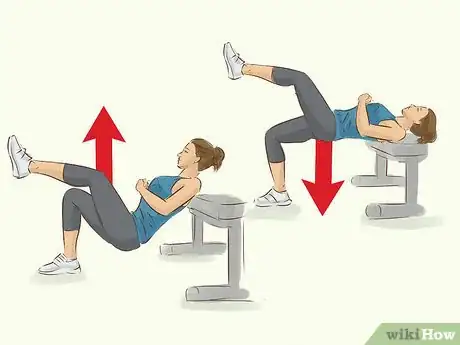

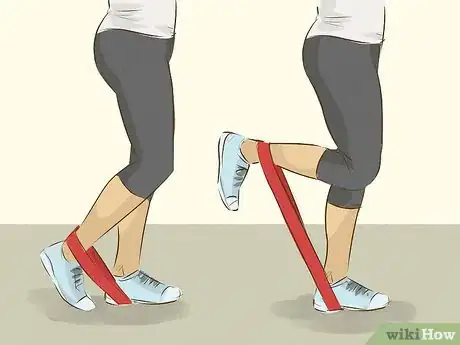




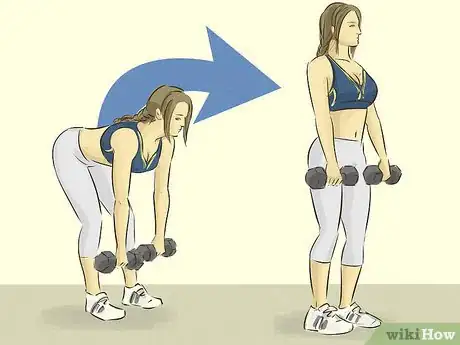

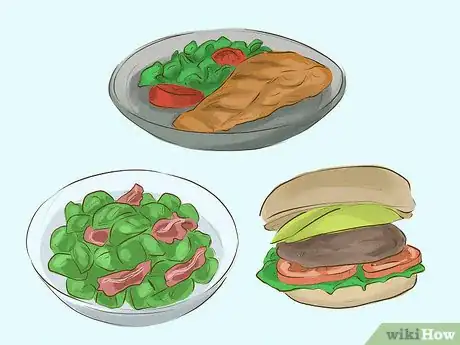

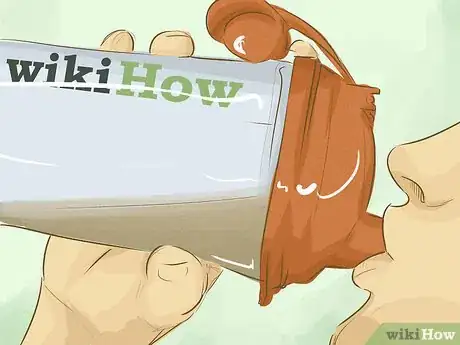


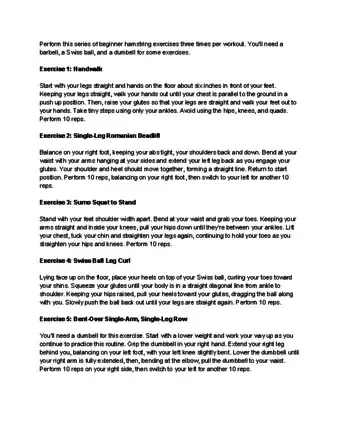



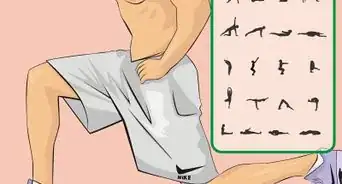
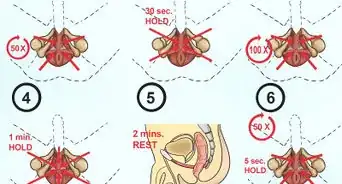



-Step-24.webp)















































